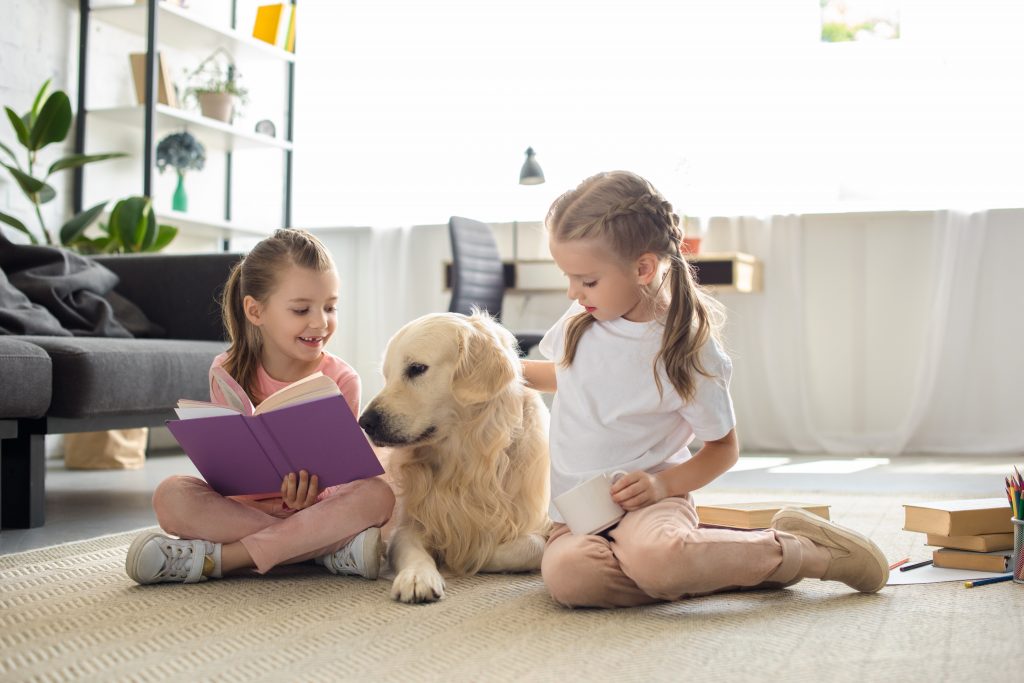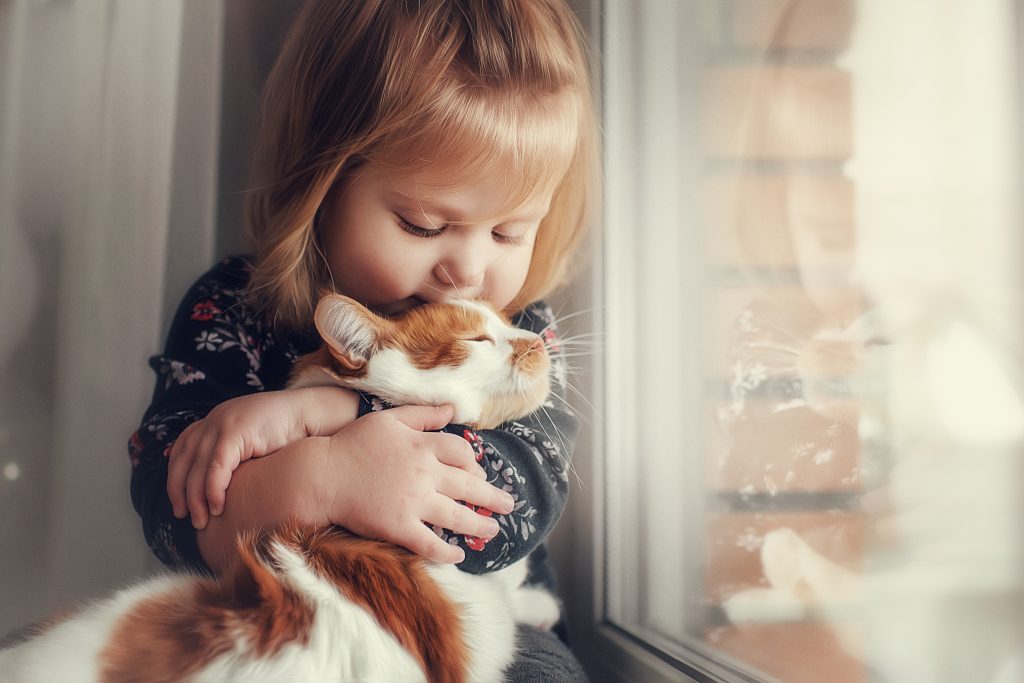Letting your children have pets can significantly impact their development and quality of life. Pets can teach your kids many values, such as kindness, empathy, patience, and responsibility. Your children’s self-esteem and immune system will also improve if they have pets at home.
Having pets can be rewarding for your children, but this is an important responsibility that will require commitment and a lot of effort. As a pet owner, expect that your children will have to look after the cat’s or dog’s overall health and safety for years. This may require them to make adjustments to their daily routine to ensure that their current responsibilities are not compromised just because they’ve decided to have a pet.
To make this transition easy for your children, help them prepare to take care of pets by following the tips below:

- Include Your Children In The Adoption Process
Although it can be very tempting to visit your local shelter on your own and bring home a pet for your children, it’s better if you actually accomplish all of these tasks with them involved. Your children will eventually become the parents of these pets, which is why it’s best if they are involved in the entire process.
You can start by visiting several shelters in your area and let your children interact with different pets. This will provide options for your children and allow them to pick a pet that they truly like. After they’ve chosen a pet, they can also help in filling out the necessary paperwork and listen from adoption counselors on how they can take care of their new furry friends.
Including your children in the adoption process will show them that being a pet owner is a vital responsibility that should never be taken lightly. The people they will meet along the way can also encourage them to become responsible pet owners.
- Empower Your Children With Information
Knowledge is power when taking care of pets. As mentioned, this is an important responsibility, so make sure that you empower your children with information pertaining to pet ownership. You can start by researching online and using credible websites, such as Pethonesty, or ask help from people who have pets.
The information your children will acquire from different sources will help manage their expectations, as well as help them become effective pet owners. Using different resources to know more about pet ownership is a must, especially if your children or the family never had a pet in the past.
- Curtail The Enthusiasm
It’s common for children to smother their pets with kisses the moment the furry friends arrive home. Pets, especially kittens and puppies, are very cuddly and irresistible. However, it’s important to remind the children not to go overboard in showing affection to their pets days or weeks after they arrived home. Being adopted and welcomed by another family is a big change in a pet’s life, and smothering them with hugs and kisses might result in stress. This will make it more challenging for the pet to adjust to the new environment and show affection to their new owners.
For you to help your children prepare for a new pet, let them understand how important it is for the pet to have some time alone. Regardless of how cute these pets are, they should still be given time to play and sleep alone. This is especially true if your children are eyeing to adopt kittens or puppies as they will need more time for sleeping and eating alone.
- Assign Pet Duties To Your Children
Being a pet owner is not all fun and games. For your children to become effective pet owners, they have to accomplish several responsibilities regularly. Regardless of the size, kind, and breed of the pet, your children will have to regularly feed them, play with them, and pay attention to any symptoms of illnesses. Being a pet owner will also require your children to pick up poop and clean their pets afterwards.
Another way to prepare your children to take care of pets is to assign them with pet duties. However, since children also have their limitations, these duties should be within reasons and should be supervised.
Some of the most common pet duties your children should have can include:
- Playing with the pet for several minutes every single day
- Providing assistance when bathing the pet
- Putting food in the pet’s bowl at the same time of the day
- Refilling the pet’s bowl with water
- Taking the pet for a walk outside (with an adult)
Your children will function as the parents of these pets, but this doesn’t mean that you should give all pet duties to them. If your children usually wake up around noon, don’t assign them to feed the pets at six in the morning. Instead, only assign pet duties that are suitable to their age and lifestyle to ensure success in the long run.
- Teach Your Children To Be Gentle With Pets
Pets are generally playful, but they will also need time to rest. Being too rough with pets can stress them out, and can become the reason why they will develop aggressive behaviors. This will make it hard for your children and the entire family to train them and encourage positive behavior as they grow up.
Make sure that this doesn’t happen by teaching your children how to be gentle with their pets. Depending on the age, you might want to start teaching your children a thing or two about being gentle months or weeks before the pet arrives.
You can start by implementing the following strategies:
- Schedule petting times: If you have a toddler, it’s best if you schedule petting times days or weeks after the pet arrives home. This will allow the pet to easily adjust to their new environment and help your children control their behavior when they’re around their pets. You can start by sitting down in the living area with the entire family and the pet, and allowing your children to gently pet their furry friend. Once the pet becomes accustomed to gentle petting, you can have these sessions several times during the day. Just make sure that your children are accompanied by an adult every single time.
- Take away a privilege: There will be instances when your children will become too rough with their pets. Since having a pet is a new experience, your children might be too overwhelmed that they end up pulling their pet’s tail or pat their head aggressively. When this happens, let your children sit down and wait for a couple of minutes before playing with their pets again. This is an effective way of teaching your children how vital it is to properly take care of their pets, and that abuse or mistreatment is not allowed.
- Set an example: Teaching your children how to be gentle with pets when you’re not doing the same will be useless. How will your children know how to be gentle with pets if you’re too harsh on these furry friends? Do you think they will actually follow your instructions if your actions contradict them? If you want to easily teach your children to be gentle to their pets, make sure to set an example. Once the pet arrives in your home, gently feed, walk and bathe them so your children will have someone to follow.

- Teach Your Children To Look For The Right Signs
One of the biggest challenges of having a pet is being able to determine if they are sick or not. Regardless of how long you’ve kept a pet, they can’t directly tell you if they are in pain. Sure, their behavior might change, but you still can’t assess which parts of their body are hurting or how severe the pain is.
Fortunately, teaching your children to look for the right signs and check the body language of the pet can help. Pets behave differently when they are pain, which is why it’s vital for your children to know what these signs are.
You can start by teaching your children that a dog’s wagging tail may be caused by happiness, aggression, or insecurity. When looking after a cat, make sure that your children understand what purrs mean. This information will make it very easy for your children to determine the needs of their pets and prevent any undesirable incidents, such as sustaining scratches or bites.
Your Role Counts
Looking after pets can become a way for your children to learn valuable life lessons that can be useful throughout all of their lives. However, keep in mind that they won’t be able to experience all of these things without learning how to properly take care of these furry friends first.
Your role as a parent or guardian is vital throughout this entire process, so make sure that you guide your children properly by using this article as your guide. As long as you’re willing to help your children, it won’t be long before they can become effective pet owners!
I’m a 20-something stay-at-home mother and wife. I have an amazing husband, a beautiful daughter, two loving dogs, and a lazy cat. I wouldn’t change my life for anything! I love to read, listen to music, cook and blog!

Speak Your Mind